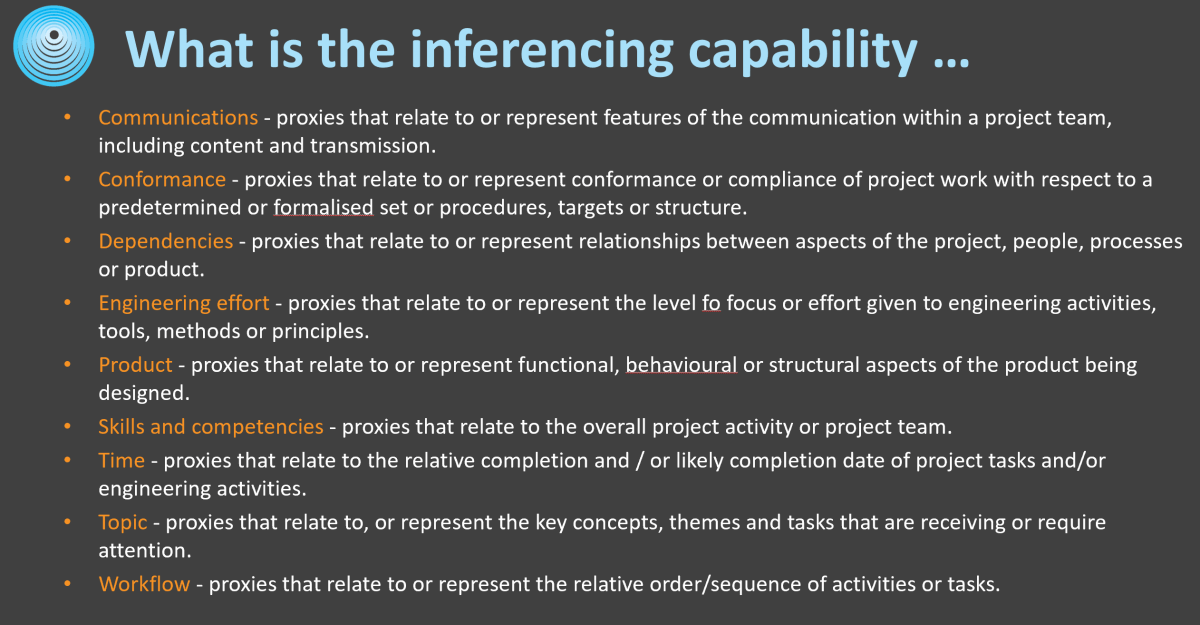At the outset of the project we hypothesised that we would be able to monitor the evolving digital footprint (emails, reports and models) in order to diagnose and recommend interventions to improve the management of large engineering projects, essentially adding an automated feedback and control loop. So how far did we get? In short, we investigated and characterised the potential inferencing power from the evolving digital footprint; created a suite of algorithms and tools that enable the monitoring of engineering work, project progress and project states; and created dashboards that enabled project managers to drill-down and roll-up through the data to help identify root cause; and, of particular importance to our industrial collaborators, allowed project stakeholders to monitor the impact of the interventions that they had made.
So, did we achieve our initial aim? Yes, but with the important caveat that rather than automating the process of making recommendations or interventions we provide the information and means to interrogate the information in support the professional judgement of the project managers. This approach is consistent with the aim of transforming project managers into evidence-based hypothesis testers where they can explore correlations, changes and the impact of their interventions. While seemingly obvious post facto, such an approach is likely as far as we can go due to the variation in context and situatedness of major engineering – i.e. they are largely one-off and each project is undertaken within a different political, environmental, social and technical context.
Lastly, it is important to note that this project and all of its outputs are intended to support the existing project management toolsets through the provision of real-time information about the project and engineering work. We have shown that additional highly valuable management information can be generated from the evolving digital footprint and characterised the possible inferencing power. For detailed information on proxies, analytics and dashboards please refer to our publications. Alternately, please get in touch with us.


